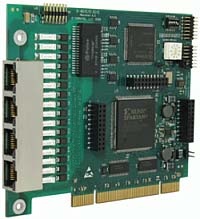Sink0
Full Member level 6
- Joined
- Nov 25, 2009
- Messages
- 390
- Helped
- 37
- Reputation
- 74
- Reaction score
- 30
- Trophy points
- 1,308
- Location
- Sao Paulo, Brazil
- Activity points
- 4,186
Hi, i need to make a PCI board with a Cyclone II FPGA so i was taking a look on others board designs. I found 2 different boards, one at opencores and the second one is Dragon PCI FPGA board from knjn (https://www.knjn.com/FPGA-PCI.html). Looking at both i see that the PCI connector of both boards says that they can work with 5v and 3.3v but they do not have any voltage conversion between FPGA pins and PCI bus. How is that possible? How you can make sure that the PCI bus is going to talk at 3.3V and not at 5v?
I do not have the knjn board schematic but at the opencores one the Banks were powered with 3.3V.
Thank you!
Let me know if i was not enough clear.
I do not have the knjn board schematic but at the opencores one the Banks were powered with 3.3V.
Thank you!
Let me know if i was not enough clear.
